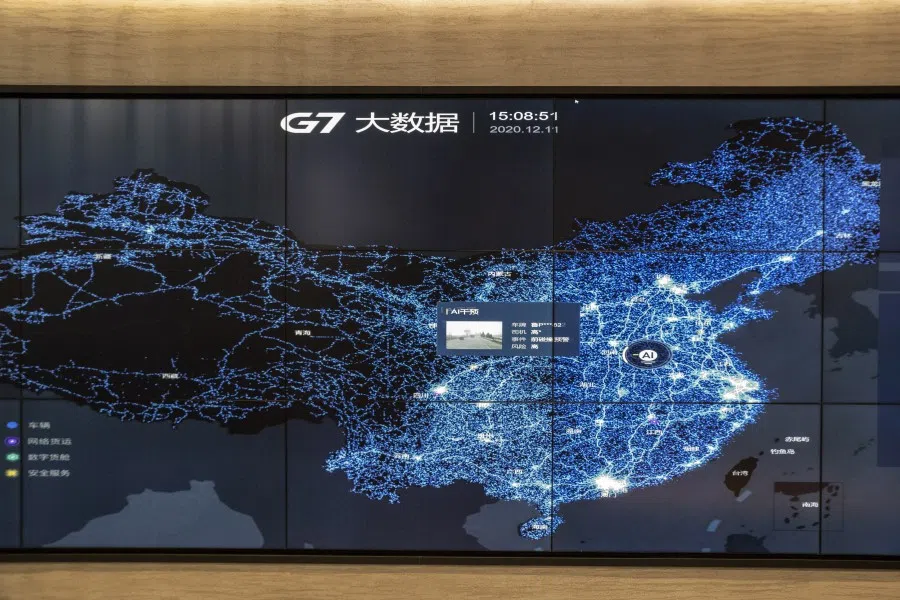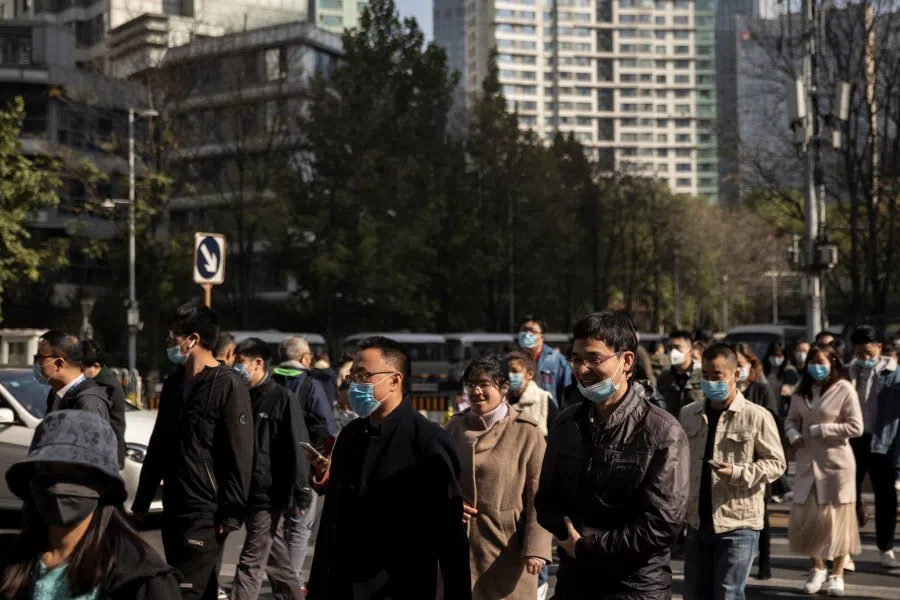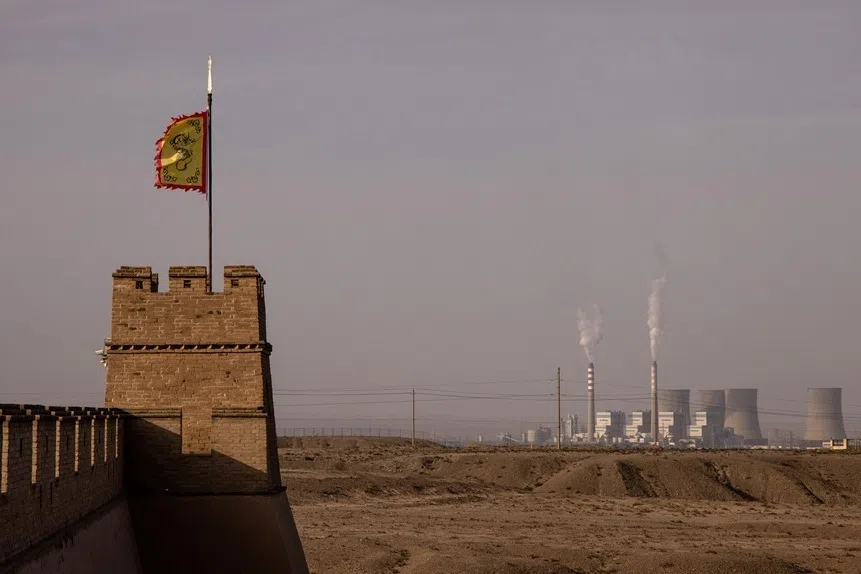China's 14th Five-Year Plan will be a game changer
In anticipation of China's 14th Five-Year Plan kicking in next year, commentator David Ng examines how the proposals will affect the direction of China's economic growth, as well as China-US competition, and in turn shift the global order.

The International Monetary Fund (IMF) has forecast that China's economy will grow 1% this year and 8.2% next year, while other international financial institutions also have relatively positive forecasts. This article lays out the short- and medium- to long-term progress of China's economy, and the impact on the world.
China's short-term economic direction set by effective control of Covid-19
China's official figures reflect the realities of the country's pandemic efforts. Effective controls have increased China's social cohesiveness. Apart from public transport, masks are not mandatory in many places in China. Fines and other rules have not been imposed either. However, there were more people wearing masks after the summer. As the situation was not severe, some factories in small cities in the Greater Bay Area started work as scheduled after Chinese New Year, but there were fewer overseas orders. And by November, the manufacturing Purchasing Managers' Index (PMI) was 52.1%, the highest since 2017, while the non-manufacturing PMI was 56.4%.
The service industry consumer price index (CPI) also shrank in November, with service sector earnings, employment figures, and salary growth negatively impacted by the pandemic.
In the six months after the Two Sessions in 2016, property prices trebled in many places. Efforts to get rid of existing unsold units came to naught, while rising prices increased the number of new unsold properties.

Property is China's biggest hidden danger
In the six months after the Two Sessions in 2016, property prices trebled in many places. Efforts to get rid of existing unsold units came to naught, while rising prices increased the number of new unsold properties.
Capital returns follow property prices, while rental prices follow salaries. China's salaries are not rising as fast as property prices, and resale property owners are not finding it easy to rent out their properties. Rental prices have remained stagnant for years, and in many places, property prices are the equivalent of 100 years' worth of rent. With the bubble around China's property market, there is pressure to lower property prices.
The "dual circulation" model calls for stimulating domestic demand, and stable property prices and orderly adjustments would help. But even if the property bubble bursts or is squeezed by certain events, the impact on China's economic growth may not be as major as painted by stakeholders, as the authorities have already redefined the path to economic growth.
Vast market enough reason for China to be bold
Next year, China will begin its 14th Five-Year Plan, and the Chinese Communist Party (CCP) central committee has made some proposals, which Chinese President Xi Jinping has elaborated on.
The proposals speak of focusing on the real economy in economic development, with measures including encouraging traditional sectors to go "smart" and high-end; strengthening new-generation sectors such as information technology, biotechnology, new energy sources, new materials, high-end equipment, new energy vehicles (NEV), conservation, aviation, and marine equipment; building infrastructure including 5G mobile communications, the industrial internet of things (IIOT), and big data centres, and improving integrated logistics channels; pushing through the energy revolution; improving farming quality and competitiveness; and driving China's regional development, such as opening up its western region and stimulating the rise of its central region.

Vision of high-quality economic development
In the next five and also fifteen years, China will innovate in order to stimulate development, and create a new edge in development. It will improve its innovative capabilities by implementing industrial upgrading and modernising its industry value chain, as well as making its economic development more effective by focusing on leading sectors such as artificial intelligence, quantum information, integrated circuits, health, neuroscience, genetics, cloud technology, and deep earth and deep sea exploration.
With confidence-boosting economic results, China sees further opening up as a policy solution to ease US hostility towards itself, with international competitiveness, domestic economy and market size as the foundations.
China will also continue its reform and opening up by strengthening the state-owned economy and stimulating various markets. Media reports noted that Xi's visit to Nantong city in Jiangsu and the exhibition on Jiangsu pioneer industrialist Zhang Jian*, as well as his praise of this historical figure to encourage today's entrepreneurs, was a clear political signal.
At the same time, China will also open up to other countries on a higher level. China has joined the Regional Comprehensive Economic Partnership (RCEP) and is also considering joining the Comprehensive and Progressive Agreement for Trans-Pacific Partnership (CPTPP) while negotiating investment agreements with Europe.
With confidence-boosting economic results, China sees further opening up as a policy solution to ease US hostility towards itself, with international competitiveness, domestic economy and market size as the foundations.
Building the country and strengthening the military for reunification
During the 14th Five-Year Plan, China's defence sector will accelerate strategic, forward-looking, and disruptive technological development. It will train and ready its troops, and ramp up preparations for reunification, protecting its sovereignty and interests, and handling the US threat.

The gap between China and the US
The 14th Five-Year plan reflects that China is far more confident and bold than two or three years ago.
In 2019, the GDP of China and the US were over US$14 trillion and US$21 trillion respectively. If China's annual economic growth outstrips the US by 3%, the two economies will be about on par in about ten years. But if the exchange rate between the RMB and US dollar is affected by black swan events, such as a pandemic or war, then the time China will take to catch up with the US will also change accordingly.
And if that happens, China's per capita GDP will only be a quarter of the US. But from another perspective, China will still have ample growth potential, and by about 2035, China's economy will be almost equivalent to the countries in the Five Eyes alliance combined.
*Zhang Jian was a leading early 20th century industrialist who was devoted to causes such as education. In 1902, he founded Tongzhou Normal College, dubbed "the first normal school in modern China", and in 1905, he started the first Chinese-funded museum, the Nantong Museum. He also became the minister of agriculture and commerce in the Republic of China government established in 1912.
Related: China's Five-Year Plan: A bottom-up model of policy making? | China's next Five-Year Plan focuses on security, stability and quality of development; adopts a more subdued tone | China's whole-of-nation push for technological innovation | China to clamp down on monopolies and spur domestic demand | Chinese companies drawn to chip-making like bees to honey





